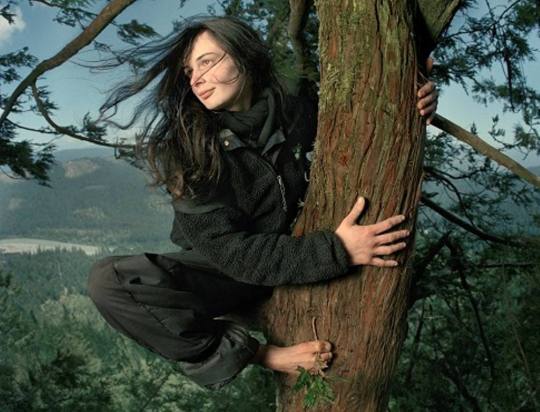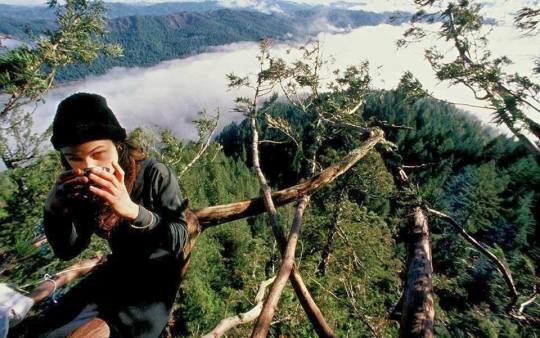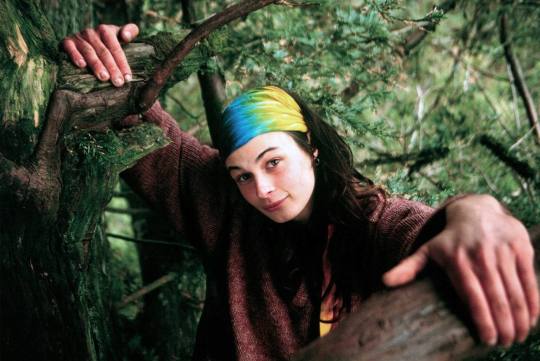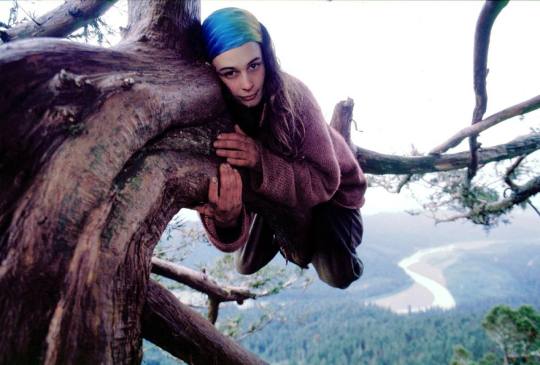#ConservationEfforts
Explore tagged Tumblr posts
Text
#AnimalLovers#WildlifeConservation#PetCare#EndangeredSpecies#AnimalRights#SaveTheAnimals#AnimalRescue#PetsOfInstagram#WildlifePhotography#AdoptDontShop#CuteAnimals#WildlifeProtection#AnimalPlanet#FurryFriends#AnimalKingdom#AnimalsOfTheWorld#ZooLife#PetAdoption#InstaPets#WildlifeLovers#NatureAndWildlife#AnimalBehavior#PetLove#ConservationEfforts#AnimalShelter#ProtectWildlife#DomesticAnimals#AnimalEducation#WildlifeAwareness#PetsAreFamily
11 notes
·
View notes
Text
#AnimalLovers#WildlifeConservation#PetCare#EndangeredSpecies#AnimalRights#SaveTheAnimals#AnimalRescue#PetsOfInstagram#WildlifePhotography#AdoptDontShop#CuteAnimals#WildlifeProtection#AnimalPlanet#FurryFriends#AnimalKingdom#AnimalsOfTheWorld#ZooLife#PetAdoption#InstaPets#WildlifeLovers#NatureAndWildlife#AnimalBehavior#PetLove#ConservationEfforts#AnimalShelter#ProtectWildlife#DomesticAnimals#AnimalEducation#WildlifeAwareness#PetsAreFamily
8 notes
·
View notes
Text
#NamibiaDrought#WildlifeCulling#FoodInsecurity#ClimateCrisis#AnimalRights#ConservationEfforts#SouthernAfrica#WildlifeConservation
13 notes
·
View notes
Video
youtube
Discover the Unforgettable Safari Experience at Mikumi National Park, TanzaniaMikumi National Park, located in Tanzania, is a hidden gem and one of Africa's best safari destinations. This stunning park offers an immersive wildlife experience that rivals the famous Serengeti. With its vast savannahs, lush greenery, and diverse ecosystem, Mikumi is home to a wide range of animal species, including elephants, lions, giraffes, zebras, and more. The park's breathtaking landscapes, from the picturesque Mkata River to the expansive grasslands, provide the perfect backdrop for an unforgettable adventure. Whether you're a wildlife enthusiast, nature lover, or simply seeking an authentic African experience, Mikumi National Park is a must-visit destination. Visit https://nisafari.com for more videos like this
#youtube#MikumiNationalPark#TanzaniaSafari#WildlifeAdventure#NatureLovers#SerengetiRival#AfricanExperience#TanzaniaTravel#ExploreAfrica#BucketListDestination#NaturePhotography#ConservationEfforts#Ecotourism#SafariLife#BigFive#WildernessEscape#TravelInspiration#AfricanWildlife#TanzaniaTourism#natureconservation#tanzania
2 notes
·
View notes
Text







Julia Hill, 22, climbed a tree in California and spent more than two years on it to save it from being cut down. 🌳🌎🌿
#JuliaHill#TreeSitter#Activism#Environmentalism#SaveTheTrees#California#TreeProtection#NatureConservation#Inspiration#Dedication#EnvironmentalActivism#ForestProtection#ClimateAction#SaveOurPlanet#Courage#Resilience#EnvironmentalHero#TreeHugger#NatureLover#ConservationEfforts#ChangeMakers
3 notes
·
View notes
Text
In a remarkable turn of events, the Auckland Island Rail, once thought to be extinct, was rediscovered in the second half of the 20th century, marking a significant milestone for ornithology and conservation efforts. This elusive bird, known for its secretive nature, was first identified in the 19th century but disappeared from scientific records between 1893 and 1966.
#AucklandIslandRail#Biodiversity#Bird#BirdConservation#ConservationEfforts#Ecology#EndangeredSpecies#EnvironmentalConservation#HabitatPreservation#NatureReserve#Ornithology#ScientificResearch#SpeciesRediscovery#SubantarcticIslands#WildlifeProtection#WildlifeRediscovery#frnwh
2 notes
·
View notes
Text
How Digital Tools Are Supporting Community-Led Conservation Projects
Community-led conservation efforts have long been essential in protecting ecosystems. Whether it’s restoring wetlands, planting native trees, or monitoring endangered species, these grassroots projects bring together local knowledge and collective energy. As stated in a Nature Journal study, community-based conservation approaches can be more successful. Internal factors of community-led park…
0 notes
Link
In the quest for sustainability, green burials present an opportunity to reduce environmental impact
#conservationefforts#environmentalprotectionthroughburial#ecofriendlyfunerals#greenburials#sustainablefuneralpractices#naturalburials
0 notes
Text
How Land Clearing Supports Sustainable Land Management in Fayette County

Discover how land clearing contributes to sustainable land management in Fayette County by promoting healthier ecosystems and reducing wildfire risks. This blog breaks down the environmental and practical benefits of responsible clearing methods. Visit us to learn more: https://underbrushclearing.com/how-land-clearing-supports-sustainable-land-management-in-fayette-county/
#LandClearing#SustainableLandManagement#FayetteCounty#UnderbrushClearing#EnvironmentalStewardship#WildfirePrevention#EcoFriendlyClearing#BrushRemoval#HabitatRestoration#LandManagement#ForestryManagement#TexasLandClearing#SustainablePractices#DefensibleSpace#ErosionControl#LandCare#PropertyMaintenance#TreeClearing#FireSafeLand#LandRestoration#ResponsibleClearing#TexasPropertyCare#BrushClearingExperts#EcoLandServices#ConservationEfforts
0 notes
Text

Crocodile Conservation Project: Preserving India’s Reptilian Giants
Crocodiles play a crucial role in maintaining ecological balance, and their conservation is vital for biodiversity.
📺 Watch the full video: 👉 [https://youtu.be/h5BPenBVu1Y]
🔗 Follow ZenStudy for UPSC & environmental topics: 🌐 Website: https://zenstudy.in/ 📢 Telegram: https://t.me/Zenstudyltd 📷 Instagram: https://www.instagram.com/zenstudyz/ 📘 Facebook: https://www.facebook.com/profile.php?id=61555473406607 📺 YouTube: https://www.youtube.com/@Zenstudyz
#CrocodileConservation#WildlifeProtection#GharialConservation#SaveCrocodiles#UPSCEnvironment#UPSC2025#UPSCExam#UPSCPrelims#UPSCNotes#Ecology#ConservationEfforts#Biodiversity#UPSCGS3#EnvironmentalStudies#HabitatProtection#IndiaWildlife#EndangeredSpecies#ReptileConservation#MuggerCrocodile#SaltwaterCrocodile#WildlifeAwareness#NatureConservation#RiverEcosystem#ClimateChange#EnvironmentalPolicy#AnimalConservation#UPSCMains#UPSCMotivation#SustainableDevelopment
0 notes
Text
#AnimalLovers#WildlifeConservation#PetCare#EndangeredSpecies#AnimalRights#SaveTheAnimals#AnimalRescue#PetsOfInstagram#WildlifePhotography#AdoptDontShop#CuteAnimals#WildlifeProtection#AnimalPlanet#FurryFriends#AnimalKingdom#AnimalsOfTheWorld#ZooLife#PetAdoption#InstaPets#WildlifeLovers#NatureAndWildlife#AnimalBehavior#PetLove#ConservationEfforts#AnimalShelter#ProtectWildlife#DomesticAnimals#AnimalEducation#WildlifeAwareness#PetsAreFamily
8 notes
·
View notes
Text
#AnimalLovers#WildlifeConservation#PetCare#EndangeredSpecies#AnimalRights#SaveTheAnimals#AnimalRescue#PetsOfInstagram#WildlifePhotography#AdoptDontShop#CuteAnimals#WildlifeProtection#AnimalPlanet#FurryFriends#AnimalKingdom#AnimalsOfTheWorld#ZooLife#PetAdoption#InstaPets#WildlifeLovers#NatureAndWildlife#AnimalBehavior#PetLove#ConservationEfforts#AnimalShelter#ProtectWildlife#DomesticAnimals#AnimalEducation#WildlifeAwareness#PetsAreFamily
11 notes
·
View notes
Text
Charles Mears State Park A Must-Visit Michigan Destination for Nature Lovers
Tucked away along the stunning shores of Lake Michigan, Charles Mears State Park offers more than just a day at the beach. This 50-acre haven is a vibrant hub of natural beauty, sandy shores, and lively community activities. It’s the perfect place for anyone from seasoned campers to casual day visitors to create unforgettable memories. The Charm of Lake Michigan The park’s heart is its beautiful…
#CampingInMichigan#campingrecipes#CampingTips#CharlesMearsStatePark#ConservationEfforts#coopershortcut#CooperShortcutCampingJourney#DogFriendlyBeaches#HikingTrails#LakeMichigan#MichiganCamping#MichiganStateParks#NatureLovers#OutdoorRecreation#PentwaterPierheadLights#PlacesToVisitWhileCamping#RecreationPassport#RVMaintenance#SunsetViews#SustainablePractices#ThingsToDoWhileCamping#blog
0 notes
Video
youtube
Etosha National Park: A Premier Safari Destination in NamibiaEtosha National Park, located in Namibia, is renowned as one of the best and top safari destinations in Africa. Spanning over 22,000 square kilometers, this vast wildlife sanctuary offers an unparalleled experience for nature enthusiasts and wildlife lovers. With its diverse landscapes, abundant wildlife, and unique ecosystem, Etosha National Park promises an unforgettable adventure in the heart of Africa.
Etosha National Park is a haven for wildlife enthusiasts, offering a remarkable opportunity to witness Africa's iconic animals in their natural habitat. The park is home to a wide variety of species, including elephants, lions, rhinos, giraffes, zebras, and numerous bird species. Visitors can embark on thrilling game drives and guided tours to explore the park's diverse ecosystems, from the expansive salt pans to the dense bushveld. The abundance of wildlife and the park's well-maintained infrastructure make it an ideal destination for both seasoned safari-goers and first-time visitors. Visit https://nisafari.com for travel guides nd more destinations.
Apart from its rich wildlife, Etosha National Park boasts breathtaking landscapes that captivate the imagination. The park's centerpiece is the Etosha Pan, a vast salt pan that stretches over 4,800 square kilometers. This unique feature creates a striking contrast against the surrounding grasslands and mopane woodlands, providing a surreal backdrop for wildlife sightings. The park also encompasses various waterholes, which serve as gathering points for animals, offering visitors an excellent opportunity to observe their behavior up close.
The combination of diverse landscapes and abundant wildlife makes Etosha National Park a photographer's paradise.Etosha National Park is not only a sanctuary for wildlife but also a place of conservation and research. The park plays a crucial role in preserving Namibia's natural heritage and promoting sustainable tourism practices. It is managed by the Namibian government and various conservation organizations, ensuring the protection of the park's delicate ecosystems and the well-being of its inhabitants.
Visitors to Etosha National Park can learn about the ongoing conservation efforts and contribute to the preservation of this remarkable African treasure.
#EtoshaNationalPark#NamibiaSafari#WildlifeSanctuary#AfricanAdventure#NatureEnthusiast#ConservationEfforts#Etosha
2 notes
·
View notes
Text
Sustainable Travel in the South Pacific: Protecting Paradise for Future Generations

The South Pacific is often considered a paradise, characterized by its breathtaking landscapes, vibrant marine life, and rich cultural heritage. However, as tourism grows, the need for sustainable travel practices becomes increasingly important to protect these islands for future generations. In this article, we will explore the significance of sustainable travel in the South Pacific, highlighting eco-friendly initiatives, responsible tourism practices, and ways travelers can contribute to conservation efforts.
The Importance of Sustainable Travel
Sustainable travel focuses on minimizing the negative impact of tourism on the environment and local communities while maximizing benefits. Unfortunately, the South Pacific faces various challenges, including climate change, pollution, and over-tourism, making sustainable practices essential. 1. Protecting Marine Ecosystems First and foremost, the region’s coral reefs are vital ecosystems that support marine life and contribute to the islands' economies through tourism. However, overfishing, pollution, and rising sea temperatures threaten these delicate ecosystems. Consequently, sustainable travel practices help protect marine environments, ensuring they remain healthy and vibrant. 2. Preserving Cultural Heritage Additionally, as tourism increases, the risk of cultural erosion grows. Supporting local customs, traditions, and artisans helps preserve cultural heritage and fosters respect for indigenous communities. Thus, sustainable travel encourages travelers to engage meaningfully with local cultures, promoting mutual understanding and appreciation. 3. Combating Climate Change The South Pacific is particularly vulnerable to climate change, with rising sea levels and extreme weather events threatening island communities. Therefore, sustainable travel practices contribute to global efforts to combat climate change by reducing carbon footprints and promoting conservation.
Eco-Friendly Initiatives in the South Pacific
Many islands are embracing eco-friendly initiatives to promote sustainable tourism and protect their natural resources. 1. Marine Protected Areas (MPAs) For instance, numerous South Pacific countries have established Marine Protected Areas to safeguard marine ecosystems and promote biodiversity. These MPAs restrict fishing and other activities to protect habitats and species, allowing ecosystems to thrive. 2. Sustainable Tourism Certifications Moreover, various organizations offer certifications for sustainable tourism practices, encouraging businesses to adopt eco-friendly policies. When planning your trip, look for accommodations and tour operators with sustainability certifications, ensuring your choices support responsible tourism. 3. Community-Based Tourism Furthermore, community-based tourism initiatives empower local communities to manage tourism in their areas. These initiatives allow travelers to experience authentic local culture while providing economic benefits to residents. By engaging in community-based tourism, you not only support conservation efforts but also enhance cultural preservation.
Responsible Tourism Practices
Travelers play a crucial role in promoting sustainable travel practices during their visits to the South Pacific. 1. Leave No Trace To begin with, adopting the Leave No Trace principles ensures that your activities have minimal impact on the environment. This includes cleaning up after yourself, avoiding single-use plastics, and respecting wildlife habitats. 2. Support Local Businesses In addition, choosing to eat at local restaurants, shop at artisan markets, and book tours with local guides helps support the economy and fosters connections with the community. This approach enhances your travel experience and contributes to sustainable development. 3. Participate in Conservation Efforts Moreover, many organizations offer opportunities for travelers to engage in conservation efforts, such as beach clean-ups, wildlife monitoring, and reforestation projects. By participating in these activities, you can give back to the environment while enriching your travel experience.
Connecting with Nature
One of the best ways to appreciate the beauty of the South Pacific is by connecting with nature. Engaging in outdoor activities fosters a deeper understanding of the environment and the importance of conservation. 1. Nature-Based Experiences For example, opt for eco-tours that emphasize nature-based experiences, such as hiking in national parks, snorkeling in protected reefs, or wildlife watching. These activities allow you to immerse yourself in the natural beauty of the islands while supporting conservation efforts. 2. Wildlife Observation Furthermore, respecting wildlife is crucial for conservation. Observe animals from a distance and avoid disturbing their habitats. Notably, many islands offer guided tours focused on wildlife conservation, providing insights into local ecosystems and the importance of protecting them. 3. Educational Opportunities Lastly, take advantage of educational opportunities, such as workshops and guided tours, to learn about the local environment and conservation efforts. Understanding the challenges facing the region can inspire you to become an advocate for sustainable travel.
Conclusion
In conclusion, sustainable travel in the South Pacific is essential for preserving the region's natural beauty and cultural heritage. By adopting eco-friendly practices, supporting local communities, and engaging with nature, travelers can make a positive impact while enjoying all that the islands have to offer. As you plan your journey to the South Pacific, consider how you can contribute to the preservation of this paradise for future generations. Ultimately, embrace the beauty of the South Pacific, and let your travels reflect a commitment to sustainability and conservation. Read the full article
#ClimateChange#Community-BasedTourism#ConservationEfforts#CulturalHeritage#Eco-FriendlyInitiatives#EnvironmentalProtection#LeaveNoTrace#MarineEcosystems#Nature-BasedExperiences#ResponsibleTourism#SouthPacific#SupportLocalBusinesses#SustainableTravel#TravelPractices#WildlifeConservation
1 note
·
View note
Text
🌍 Eco-Friendly Travel in Guyana: A Model for Sustainable Tourism 🌿
Looking for a travel experience that leaves a lasting positive impact? Guyana offers community-based tourism, eco-friendly adventures, and conservation-focused initiatives.

Explore pristine rainforests, engage with vibrant local communities, and contribute to efforts protecting Guyana's incredible biodiversity. 🌳🐦
📖 Dive into the full story: https://www.travelguyana.co/2024/12/17/eco-friendly-travel-experiences-community-based-tourism-and-conservation-efforts-in-guyana/
0 notes